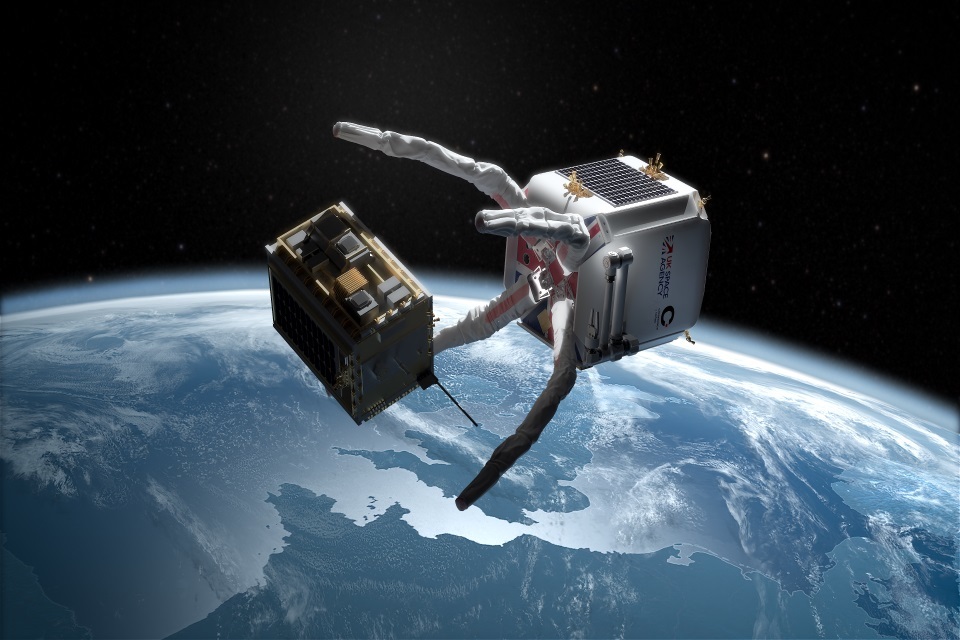Investing in Space Debris Removal: A New Frontier in Orbital Economics

Investing in space debris removal is becoming a vital part of orbital economics. Over the years, the rise of satellites and space missions has led to an increase in debris orbiting Earth. This poses risks to active spacecraft and future exploration. Companies and governments are now recognizing the economic potential in cleaning up our space environment. Innovative technologies are emerging to tackle this challenge, opening new markets and job opportunities. The future of space investment hinges on sustainable practices, making debris removal not just necessary but profitable.
Key Takeaways
- Investing in space debris removal is crucial for the sustainability of space operations and can lead to long-term economic benefits.
- Companies interested in this field should stay informed about legal and technical frameworks to navigate regulations effectively.
- Understanding the perspectives of key space-faring nations can help investors identify potential partnerships and funding opportunities.
- Commercial stakeholders should explore innovative technologies that can efficiently address the space debris issue and attract investment.
- Engaging with policymakers and industry leaders can provide insights into upcoming trends and shifts in the market related to space debris removal.
- By prioritizing sustainable practices, investors can align their strategies with global efforts to maintain a clean orbital environment.
Understanding the Space Debris Problem
Importance of LEO
Low Earth Orbit (LEO) plays a crucial role in modern society. It supports telecommunications, enabling global communication networks. Weather forecasts rely on satellites in LEO for accurate data. Military operations also depend on these satellites for surveillance and defense strategies. The stability of LEO is essential for these services.
Growth of Commercial Spacecraft
The number of commercial spacecraft in LEO is rapidly increasing. Estimates suggest that by 2030, over 100,000 spacecraft will be operational. This growth raises concerns about space traffic management. Each new satellite adds to the potential for collisions, increasing the risk of debris creation.
Kessler Syndrome
Kessler Syndrome describes a scenario where collisions create more debris. This debris can collide with other satellites, leading to further destruction. As the density of objects in orbit increases, the chances of such collisions rise dramatically. This cycle can destabilize the orbital environment and make it hazardous for future missions.
Space debris poses a significant threat to both existing and future satellites. The accumulation of debris could hinder access to LEO. Without action, the consequences could be dire for telecommunications, weather forecasting, and military operations.
Legal and Technical Considerations
Necessity of ADR
Active Debris Removal (ADR) is essential for a sustainable Low Earth Orbit (LEO) environment. Space debris poses risks to satellites and human life in orbit. The increasing number of satellites amplifies these dangers. ADR can help mitigate these threats, ensuring safe operations in space.
Global Consensus Challenges
The lack of a global consensus complicates debris removal efforts. Definitions of space debris vary among countries and organizations. This inconsistency leads to challenges in identifying what qualifies as debris. Without clear definitions, it becomes harder to create effective removal strategies.
Ownership and Liability Issues
Ownership and liability present further hurdles in debris removal activities. Questions arise about who owns the debris. Is it the original satellite owner or the country of origin? Liability for damages caused during removal also remains unclear. These uncertainties can deter investment in ADR initiatives.
Attribution Problems
Attribution issues add complexity to the legal landscape. Determining responsibility for space debris can be difficult. Countries may dispute claims regarding ownership and responsibility. This lack of clarity may lead to conflicts between nations.
Perspectives of Key Space-Faring Nations
United States
The U.S. has developed national strategies to tackle space debris. In 2020, the National Orbital Debris Research and Development Plan was released. This plan focuses on research, monitoring, and removal technologies. The U.S. government also collaborates with private companies to innovate debris mitigation solutions.
China
China has recognized the growing threat of space debris. In 2021, it launched a space debris monitoring system. This system helps track and manage orbital objects. China is also investing in technology for debris removal missions.
Russia
Russia has a long history in space exploration. It established its own guidelines for space debris management in 2019. These guidelines focus on preventing collisions and reducing debris generation from new launches.
European Union
The EU has taken significant steps toward addressing space debris. The European Space Agency (ESA) initiated the Clean Space program in 2013. This program promotes sustainable practices and encourages member states to invest in debris removal technologies.
Canada
Canada emphasizes international cooperation in addressing space debris. The Canadian Space Agency promotes partnerships with other nations and organizations. They focus on developing innovative technologies for tracking and removing debris.
Emerging Powers
India and Japan are emerging space powers making strides in this field. India actively participates in international forums on space safety. Japan invests in technology development for collaborative debris removal efforts.
Collaborative efforts between nations and the private sector are crucial. Partnerships can lead to effective solutions for managing space debris.
Commercial Stakeholders and Investment Opportunities
Launch Providers
Launch providers are significant stakeholders in the growing issue of space debris. As more satellites enter Low Earth Orbit (LEO), the risk of collisions increases. This situation can lead to costly damages for launch providers. They face potential liabilities if their missions contribute to debris creation. Companies like SpaceX and Arianespace must invest in tracking and managing debris to protect their assets.
Investment Opportunities
Investment opportunities in space debris removal technologies are expanding. Companies are developing solutions such as net capture systems, robotic arms, and laser propulsion methods. These technologies aim to remove defunct satellites and debris from orbit. Investors can support startups focused on these innovations. The market for space debris removal is projected to grow significantly in the coming years.
Private Sector Innovation
The private sector plays a crucial role in addressing the space debris problem. Innovative companies drive research and development for sustainable solutions. For instance, ClearSpace-1 aims to capture and deorbit a piece of space junk by 2025. Such projects highlight how private investments can lead to effective strategies for managing orbital debris. Public-private partnerships may also enhance funding and resources for these initiatives.
Closing Thoughts
Investing in space debris removal is more than just a trend; it’s a necessity for the future of orbital economics. You’ve learned about the challenges, legal frameworks, and investment opportunities in this evolving field. The stakes are high, and the potential rewards are even higher. By addressing space debris, you can help ensure safe and sustainable access to space for generations to come.
Now is the time to take action. Explore partnerships, invest in innovative technologies, and advocate for policies that support debris removal initiatives. Your involvement can shape the future of space exploration and commerce. Don’t miss out on being part of this groundbreaking movement—your contributions can make a significant difference.
Frequently Asked Questions
What is space debris?
Space debris refers to defunct satellites, spent rocket stages, and fragments from collisions or disintegration. It poses risks to operational spacecraft and the International Space Station.
Why is space debris removal important?
Removing space debris is crucial to ensure safe satellite operations, protect astronauts, and maintain sustainable use of outer space. It prevents potential collisions that could exacerbate the debris problem.
What are the legal challenges in space debris removal?
Legal challenges include determining liability for debris, compliance with international treaties, and establishing ownership rights. Current regulations lack clarity on responsibility for debris cleanup.
Which countries are leading in space debris management?
Countries like the United States, Russia, China, and members of the European Union are actively developing strategies and technologies for space debris mitigation and removal.
What investment opportunities exist in space debris removal?
Investors can explore opportunities in technology development, partnerships with aerospace companies, and government contracts focused on innovative debris removal solutions. The sector is poised for growth.
How does space debris impact satellite operations?
Space debris increases collision risks for satellites, which can lead to costly damages or loss of service. Effective removal strategies can enhance satellite safety and longevity.
Are there any current technologies for removing space debris?
Yes, technologies include nets, harpoons, lasers, and robotic arms designed to capture or deorbit debris. Companies are innovating rapidly to create effective solutions for this growing challenge.
 Send Buck a voice message!
Send Buck a voice message!




